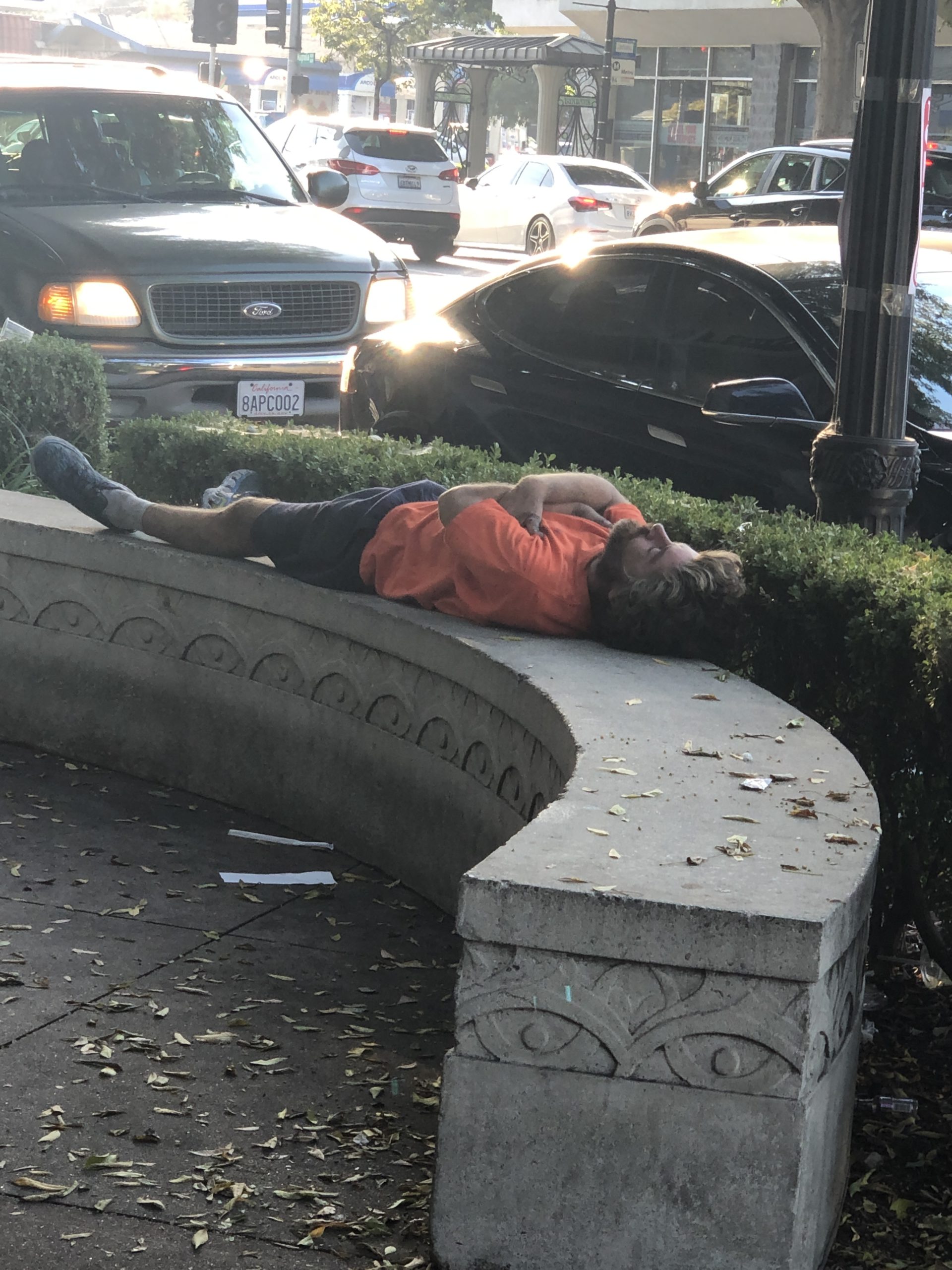The recent decision by the City of Burbank to declare a “homelessness crisis” over perhaps 150 or less allegedly homeless people has sparked a significant debate among local residents and policymakers, particularly within conservative circles. Critics question the rationale behind labeling the situation in Burbank a crisis, especially in light of the data suggesting a different narrative. Indeed, the recent daytime alleged homeless county was 252, lower than last year of which 45 vehicles and 15 RVs were counted, meaning that more than 40% of those alleged homeless are van-life people. The homeless count includes the fake homeless who are people who are professional panhandlers which has been revealed in numerous news reports as well as persons who bike, bus, and walk into Burbank daily to panhandle but who do not live here.
The “Crisis” in Numbers
Recent statistics from the city reveal that the actual number of homeless individuals in Burbank has decreased by 9.28% between 2020 and 2022. Patrick Prescott, Burbank’s Community Development Director, pointed out in a recent report that the total number of people experiencing homelessness in Burbank is relatively modest, especially when compared to broader regional trends in Los Angeles County where homelessness has surged by 47% despite a 33% increase in housing units available for the homeless. But by calling it a “crisis,” the City staff can proceed immediately to build their project which allegedly is politically motivated and has been accused of being driven by cronyism and allegedly by Mayor Nick Schultz who told the City Council he “expected” them to vote 5-0 in favor of the expenditure.
Even more telling is the composition of the homeless population in Burbank. According to the same report, 43% of those counted as homeless are individuals living in their vehicles—many of whom are not permanent residents but rather transients who “roll up into Burbank.” This demographic data challenges the perception of a rooted homelessness issue requiring extensive city-funded intervention.
“There are not Burbank residents, so why are Burbank residents being forced to pay for them?” states Helen Wong, a volunteer working in the area of homeless outreach in Burbank since 2007.
Fiscal Concerns and Efficacy of Homelessness Programs
The city’s plan to spend an initial $3.4 million, and many more millions in the future, on the proposed Homeless Solutions Center and Safe Parking program is another flashpoint in the debate. Critics, including local fiscal conservatives, argue that similar large-scale spending initiatives in other California cities like Los Angeles and San Francisco have failed to curtail, and in some cases have exacerbated, the homelessness problem.
“When you build it, more will come,” stated Christopher Matthew Spencer, a local resident since 1991 who volunteers to help those suffering from addiction and homelessness. “Those who are really homeless but suffering from addiction, continue to refuse help and when we place addicts into housing, they mostly return to the street to continue to seek their fix, such as Cary Mitchell who has been panhandling by Porto’s since 2016 and arrested 10 times in 12 months for public intoxication. He was provided housing but checked himself out of the program since there are rules against drinking he did not wish to follow,” Spencer added.
Moreover, the selective allocation of funds has raised eyebrows. A recent community report highlighted that Burbank had received only $225,000 from Measure H funding, despite the city contributing significantly more to the fund. Burbank residents are taxed more than $8 million every year on sales to fund the Measure, but little of it returns to the community and is spent elsewhere. This has led to questions about the efficiency of resource allocation and the return on investment for Burbank taxpayers. Critics have called Measure H a fraud.
Political Overtones and Alleged Cronyism
Mayor Nick Schultz, a key proponent of the homelessness initiatives, has faced scrutiny over alleged cronyism and conflicts of interest. According to the California Secretary of State, Mayor Nick Schultz received significant campaign contributions from local real estate developers and unions, some of whom may stand to benefit from the city’s expansive homelessness programs. Multiple speakers from the District Council of Iron Workers of the State of California recently spoke at City Council to push for construction projects they would benefit from in Burbank while the Secretary of State shows that Mayor Nick Schultz received a $5,500 campaign contribution from them on March 4, 2024. Critics argue that such contributions will influence policy decisions, prioritizing political considerations over practical, community-focused solutions. Mayor Nick Schultz was criticized for participating in any decision-making process for projects that his campaign contributors would stand to benefit from.
Alternative Perspectives and Solutions
Opponents of the current plan advocate for alternative, less costly measures that leverage existing resources. They point to nearby facilities, like the shelters in North Hollywood and the tiny village project, which could provide necessary support without the need for significant new spending. Additionally, the enforcement of the Martin v. City of Boise decision by the Supreme Court, which precludes the criminalization of public sleeping when no alternative shelter is available, is often misapplied in Burbank, where alternatives do exist.
Residents recommended that the City look at low-cost barracks-style housing that would cost very little as opposed to spending millions of dollars of the taxpayers’ funds on the proposed housing project.
Community Response
The community response has been mixed, with some residents supporting the city’s proactive stance on homelessness as a moral and social imperative, while others see it as an impractical drain on city resources based on misrepresentations of the scope and nature of the problem.
As Burbank moves forward with its plans, the debate continues, underscoring the challenges of addressing homelessness in a way that balances compassion with fiscal responsibility and effectiveness. The outcomes of these initiatives will likely influence not only local policy but also the political future of those at the helm of these decisions.


